One of the first things people say when they find out we drink goat milk is something like, “I tried it once… it was awful!” Usually, this comes with a hesitant smile and a story about how strong or weird the flavor was.
But when I explain that our milk tastes creamy, sweet, and nothing like the store-bought stuff, people get curious. And when they actually try a glass? They’re shocked. “I can’t believe this is goat milk!”
So what makes the difference?
The truth is, goat milk doesn’t have to taste “goaty.” In fact, when handled well, it can taste just as sweet and creamy as cow’s milk—and often even better. Here’s how to make sure your milk tastes as amazing as possible.
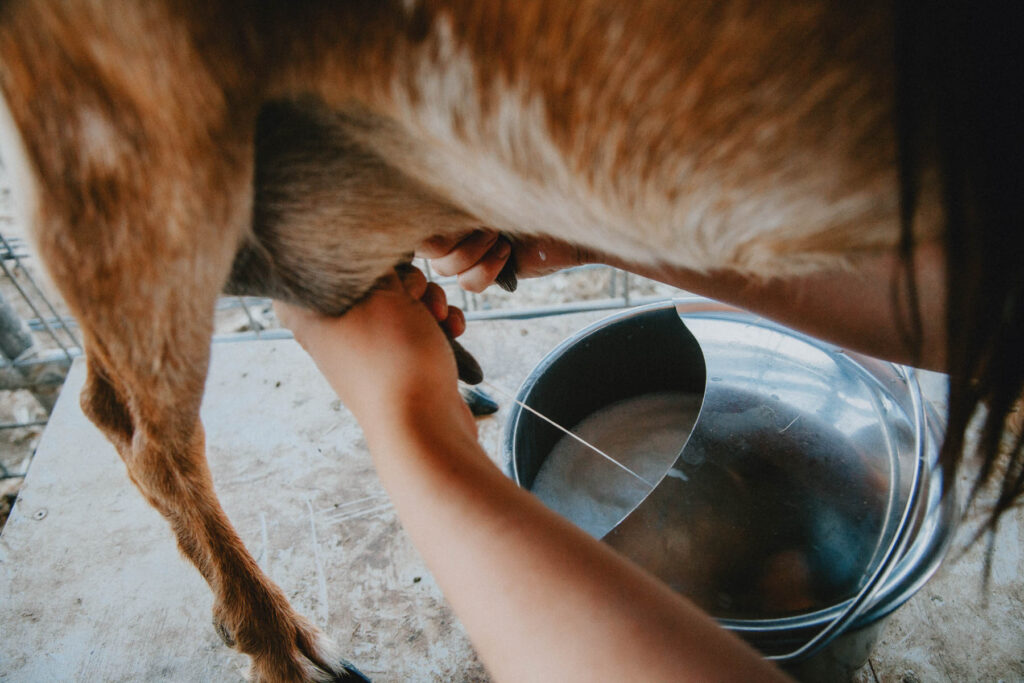
It’s true. Our goat milk tastes amazing, and there are some important steps we take to keep it tasting that way.
Why Does Goat Milk Sometimes Taste “Goaty”?
If you’ve ever tasted goat milk that seemed overly strong or “goaty,” chances are it was pasteurized, poorly handled, or came from a breed known for a more pronounced flavor. On our homestead, our goat milk is creamy, rich, and sweet—often surprising people with how similar it tastes to cow’s milk!
The breed of goat plays a big role in that. We raise Mini Nubians, a cross between Nigerian Dwarfs and Nubians—two breeds known for their sweet milk and high butterfat content.
The Role of Goat Breeds in Flavor
Milk flavor starts with the goat. Some breeds, like Nigerian Dwarfs, Nubians, and Mini Nubians (a cross between the two), are known for producing sweet, high-butterfat milk. Other breeds may have a stronger flavor naturally.
If you’re raising goats for fresh milk, start with a breed known for great-tasting milk—and you’re halfway there. Some other popular homesteading breeds of dairy goats include Lamanchas, Saanens, and Alpines.
What to Do If Your Milk Still Tastes Off
If you’re still noticing off flavors despite good handling practices (like the ones I’ll share below), it might be a sign of a health issue, such as mastitis. In that case, it’s best to send a sample to a local herd health lab to get it tested.
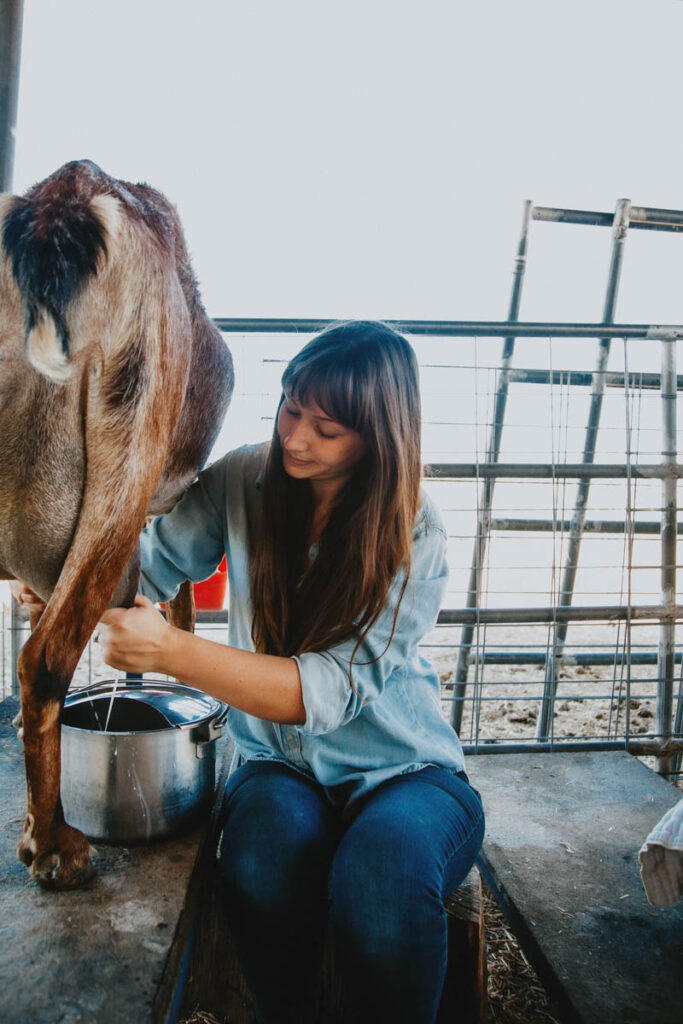
1. Feed Alfalfa Hay & Free Choice Loose Minerals
What your goat eats directly affects the taste of her milk. Alfalfa is not only nutritious, it also adds a lovely sweet flavor. Free-choice loose minerals are just as important. A mineral imbalance can cause milk to taste off, even if everything else is dialed in.
2. Keep Bucks Separate From Milking Does
This one surprises people: bucks can affect how milk tastes.
Their strong scent (especially during breeding season) can rub off on does, literally—and that musk can make its way into the milk. We let our bucks and does share a fence line year-round, but we only house them together briefly during breeding season to avoid off-flavors.
3. Chill Milk Quickly
Bacteria multiply fast in warm milk, so rapid chilling is essential for flavor and longevity.
Quality, clean raw milk will culture itself naturally if left at room temperature for a day or two. It’s not harmful to eat (in fact there’s a lot of probiotic goodness in clabber!), but milk that has not rapid-chilled will develop off-flavors very quickly.
We pour fresh milk into jars and place into a cooler filled with ice water right in the barn—before it ever hits the fridge.
You can also set jars in the freezer for 30–60 minutes before refrigerating to bring down the temperature quickly. Whichever method you use, aim to cool the milk to at least 55 °F within the first 30 minutes before moving to the fridge.
This one step makes a massive difference in freshness and shelf life.
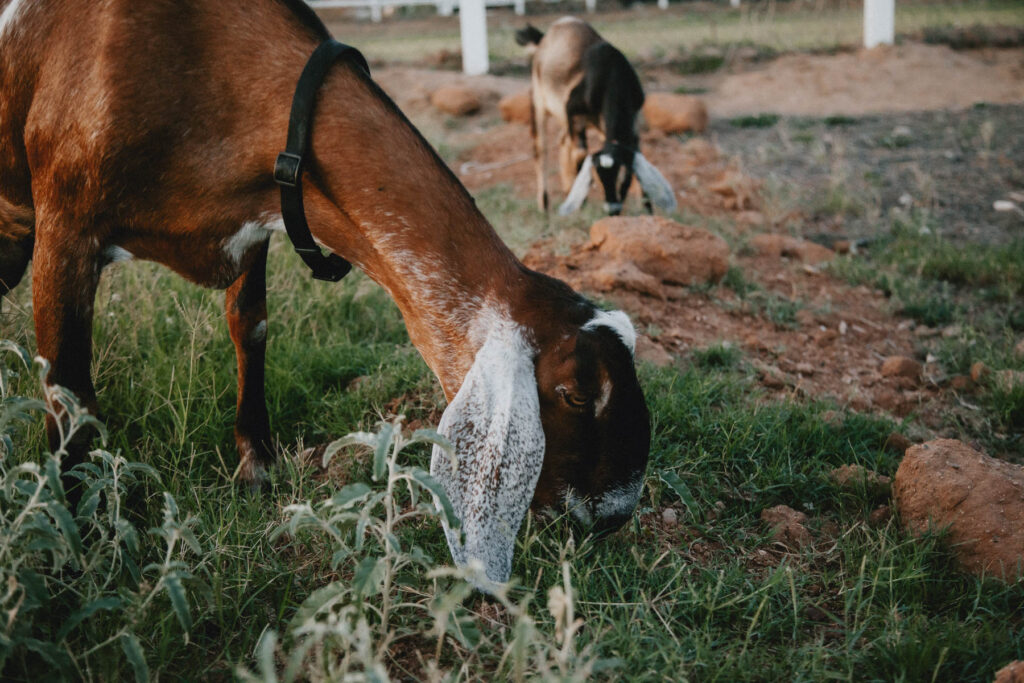
4. Filter Your Milk
Filtering your milk removes stray hairs or bits of hay, and is also a helpful tool to check the health of your goat. Clumps or residues, or milk that filters slowly, are classic signs of mastitis in milk.
Milk can pick up flavors from your gear—especially if you’re using plastic containers or reusable filters. We only use glass jars to store our milk, and prefer disposable milk filters because they’re easy to use and help avoid milkstone and residue buildup.
If you use reusable strainers or cheesecloth, be sure to sanitize them thoroughly after each use.
5. Keep Your Equipment Clean (Really Clean)
Milkstone is a nearly invisible buildup that can harbor bacteria and cause off-flavors. A weekly acid rinse helps keep it at bay.
I use One-Step, an oxygen sanitizer. I spray it on my pails, jars, and strainers after washing and let them air dry or go through the steam-setting in the dishwasher. It’s my go-to for cheesemaking equipment too!
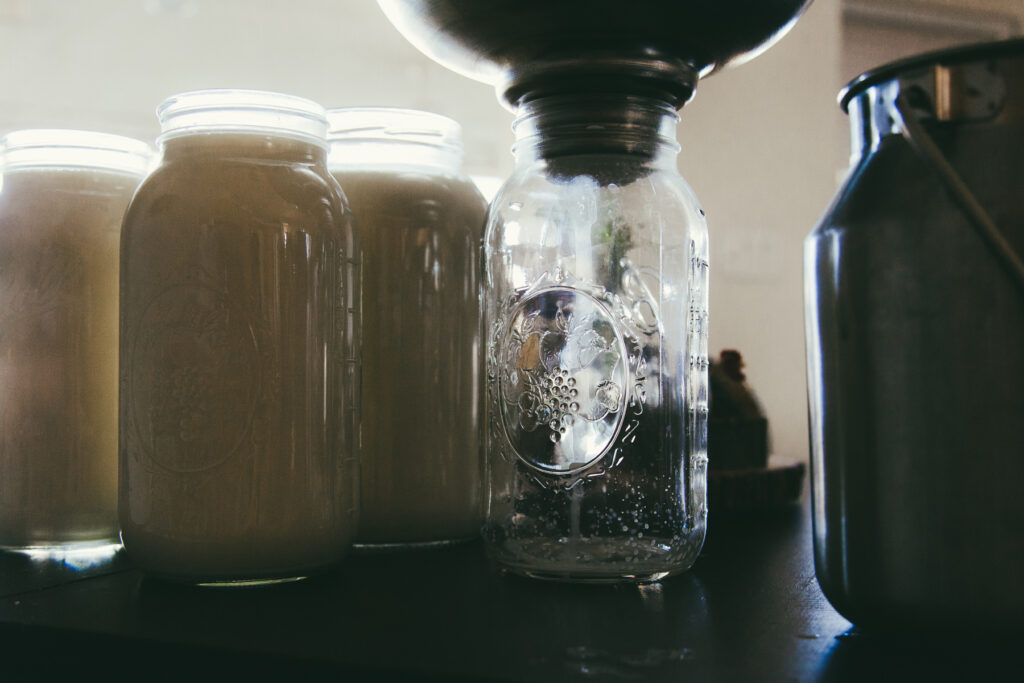
Does Your Goat Milk Still Taste Off?
If you’re doing everything right and your milk still tastes “off,” it might be time to test it. Contact your local extension office or dairy lab to run a milk sample—especially if you suspect something like mastitis or bacterial imbalance.
You can also check with the American Dairy Goat Association (ADGA) or Mini Dairy Goat Association (MDGA) for more info on milk testing programs.
Want Help Troubleshooting Off-Flavors?
If you’re still wondering why your goat milk doesn’t taste quite right, I’ve created a free downloadable flowchart to help you troubleshoot the most common causes of off-flavors. It’s simple, easy to follow, and will walk you step-by-step through possible issues—from diet to sanitation and beyond.
Click here to grab the free PDF and get started on your journey to consistently sweet, delicious goat milk. You’ll also be added to my email list where I share more homestead tips, goat care help, and sneak peeks into farm life. I’m so glad you’re here!

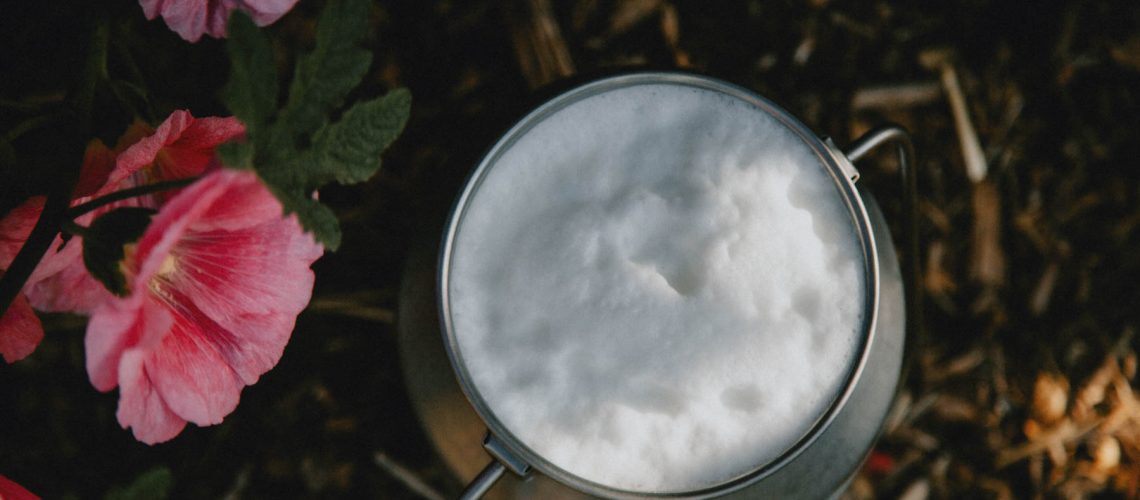

2 Responses
I’m loving your blog! We milk into a stainless steel bucket with an ice bottle in it to start the cooling process. I also put a nut bag mesh strainer over top of milk pale so the excess hair and debri stays out. Will have to try some of that Star-San!
Thank you so much! I love the idea of having an ice bottle in the milk pail!